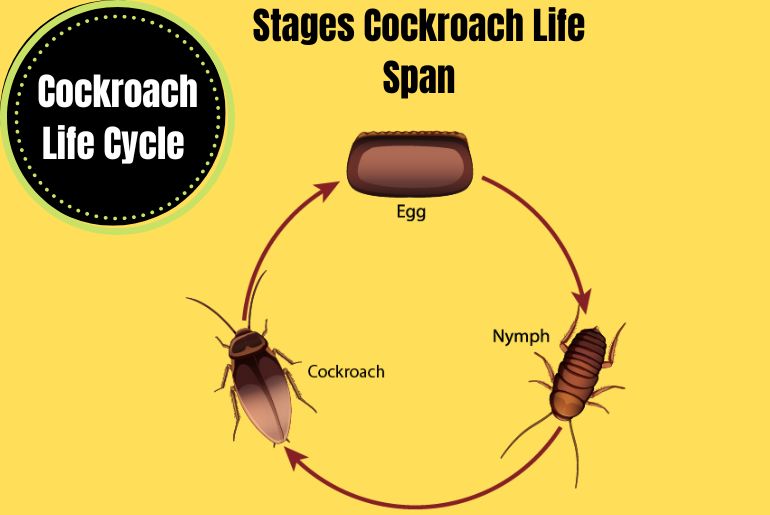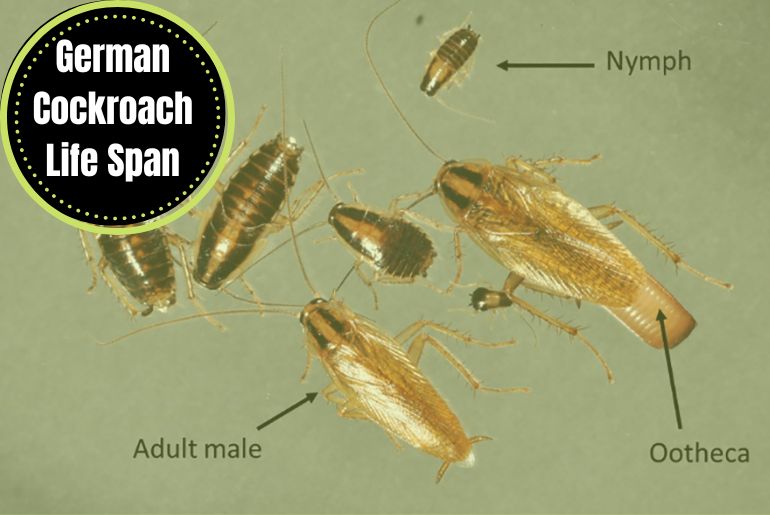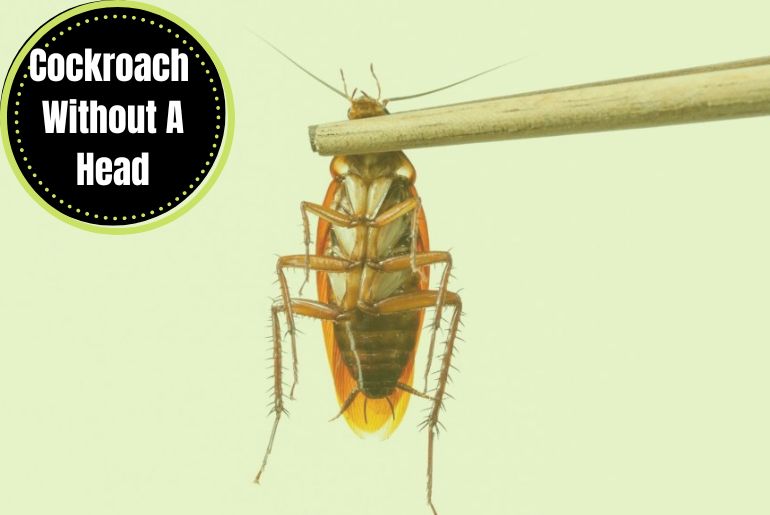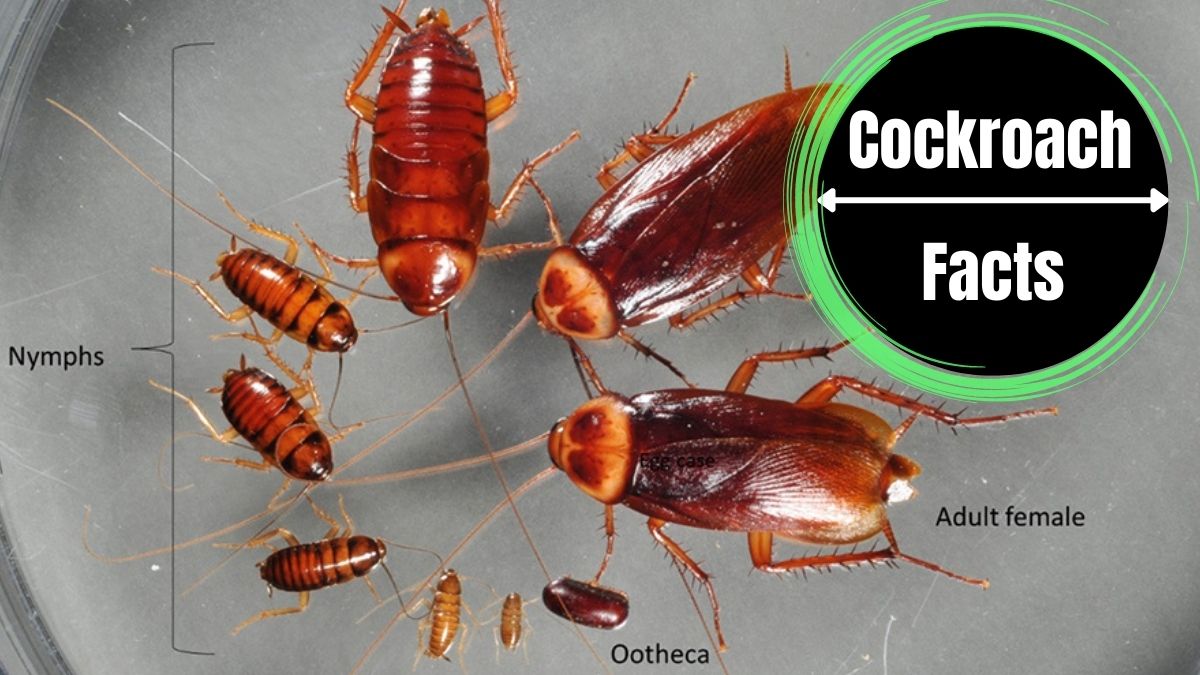The average life span of a cockroach is about one year, but it depends on the species. The German cockroach can live a few months up to a year, but the American cockroach can live up to 3 years. It also depends on environmental conditions like temperature, humidity, food availability, etc. They can bear harsh conditions, but these conditions reduce their life span. The cockroach having suitable environmental conditions can live more than the roaches facing harsh conditions.
Stages in Cockroach Life Span

Egg
Cockroaches lay eggs in a structure called an ootheca, which is a hardened, purse-like case. The number of eggs in an ootheca can vary depending on the cockroach species, but some species can lay up to 40 eggs simultaneously.
The eggs are typically white or pale and are about the size of a grain of rice. They are usually found in hidden areas, such as walls, under floors, or crevices. Depending on the species and environmental conditions, they take about one to two months to hatch. After hatching, the young cockroaches, or nymphs, resemble small versions of adult cockroaches and go through several stages of development before reaching maturity.
Nymph
Cockroach nymphs are the immature stages of cockroaches that have not yet reached adulthood. They are smaller and more slender than adult cockroaches and do not have wings.
Cockroaches undergo metamorphosis, which involves several stages of development from egg to adult. The nymph stage follows the egg and larval stages and precedes the adult stage. During the nymph stage, cockroaches grow and molt several times, gradually developing the features of an adult cockroach.
Nymphs are active and are capable of feeding and reproducing. They are generally more mobile and less sluggish than adult cockroaches, and they are often more difficult to control because they can hide more easily in small cracks and crevices.
Cockroach nymphs can be found in various habitats, including homes, businesses, and outdoor environments. They are often attracted to warm, humid areas and can be found in kitchens, bathrooms, and basements. They are also attracted to food and water sources and can be found near trash cans and other food sources.
Adult
In the cockroach life cycle, the adult stage is the final stage of development. Cockroaches undergo incomplete metamorphosis, meaning they do not have a pupal stage like many insects. Instead, they hatch from eggs as nymphs, smaller versions of adults and lacking functional wings.
As nymphs, cockroaches undergo several molts, shedding their exoskeletons and growing larger each time. Once they reach adulthood, they have fully developed wings and can fly. Adult cockroaches are also sexually mature and able to reproduce.
The lifespan of adult cockroaches varies depending on the species. Some species may live for several months, while others live for several years. In general, cockroaches are hardy insects that can withstand various environmental conditions. However, they are more likely to survive and reproduce in environments that provide ample food and water.
Life Span of American Cockroach
The life span of an American cockroach varies depending on various factors such as temperature, humidity, and access to food and water. However, the average lifespan of an American cockroach is about one year.
In optimal conditions, American cockroaches can reach sexual maturity in about three to four months. After mating, female American cockroaches can lay an average of 150 eggs in their lifetime, typically deposited in an ootheca protective casing. The eggs take about six to eight weeks to hatch into a nymph. The nymphs are smaller than adults and capable of feeding. They undergo multiple changes before reaching adulthood. Adult cockroaches are capable of reproduction.
They can survive for several weeks without food or water. This is because they can enter a state of torpor, where their metabolism slows down significantly, allowing them to survive for extended periods.
German Cockroach Life Span
The life span of a German cockroach (Blattella germanica) can vary depending on several factors, including its environment, access to food and water, and the presence of predators or parasites. In general, however, German cockroaches have a relatively short lifespan than other insects.

Under optimal conditions, a German cockroach can live for up to a year. However, their lifespan may be significantly shorter in less favorable conditions, such as when food and water are scarce or the environment is not conducive to their survival.
The lifespan of a German cockroach is also influenced by its reproductive cycle. Female German cockroaches can reproduce rapidly, laying up to 50 eggs at a time and producing several egg cases throughout their lifetime. The eggs hatch into nymphs, which grow and develop into adult cockroaches. The entire process from egg to adult can take as little as a few months under optimal conditions.
Hissing Cockroach Life Span
Hissing cockroaches, also known as Madagascar hissing cockroaches, are a species of large, wingless cockroaches native to Madagascar. They are often kept as exotic pets or used in educational settings due to their docile nature and unique appearance.
In the wild, Madagascar hissing cockroaches have a lifespan of about 3-5 years. However, in captivity, where they are protected from predators and have access to proper care and nutrition, they can live for up to 5-7 years.
Male Madagascar hissing cockroaches tend to live slightly longer than females, as females have a shorter lifespan due to the energy and resources required for reproducing.
It is important to provide Madagascar hissing cockroaches with suitable habitats and proper care in order to ensure their longevity. This includes providing them with a spacious enclosure, a substrate for burrowing and hiding, and a consistent source of food and water. It is also important to maintain proper temperature and humidity levels in the enclosure to keep the cockroaches healthy and comfortable.
Cockroach Life Span Without Food
Cockroaches are able to survive for extended periods of time without food, but the exact length of time depends on a variety of factors, such as the species of cockroaches, the environmental conditions, and the cockroach’s age and size.
In general, adult cockroaches can survive for several weeks without food, but they may begin to weaken and become more susceptible to predators or other environmental threats as time goes on. Some species of cockroaches, such as the American cockroach, are able to survive for up to a month without food.
Younger cockroaches, or nymphs, may not be able to survive as long without food because they are still growing and developing and require more energy to do so.
The cockroaches can survive for extended periods without food, and they do need access to water in order to survive. Without access to water, cockroaches will eventually die.
How Long Does A Cockroach Live Without A Head?
Cockroaches can survive for a short period of time without their head. They eventually die because their head is responsible for many important functions, such as eating, drinking, and breathing. The exact length of time a cockroach can survive without its head depends on various factors, such as the species of cockroach and the conditions it is in. Some reports suggest that some species of cockroach can survive for several weeks without a head, while others may only survive for a few days. In general, cockroaches without heads will die much more quickly than those with heads due to their inability to perform essential functions.

Factors Affecting the Life Span of Cockroach
There are several factors that can affect the lifespan of a cockroach. These include:
Temperature
Cockroaches are cold-blooded insects, which means their body temperature is influenced by the temperature of their environment. In general, cockroaches can survive longer at cooler temperatures.
Humidity
Cockroaches require a certain level of humidity to survive. If the air is too dry, they may become dehydrated and die. On the other hand, if the air is too humid, they may become waterlogged and die.
Food Availability
Cockroaches require a constant supply of food to survive. If food is scarce, cockroaches may have a shorter lifespan.
Predators
Cockroaches may be preyed upon by other animals, such as birds and rodents, which can shorten their lifespan.
Diseases
Like all animals, cockroaches can be affected by various diseases that can shorten their lifespan.
Genetic Factors
Some cockroach species have a naturally shorter lifespan than others. For example, the lifespan of a German cockroach is typically shorter than that of an American cockroach.

